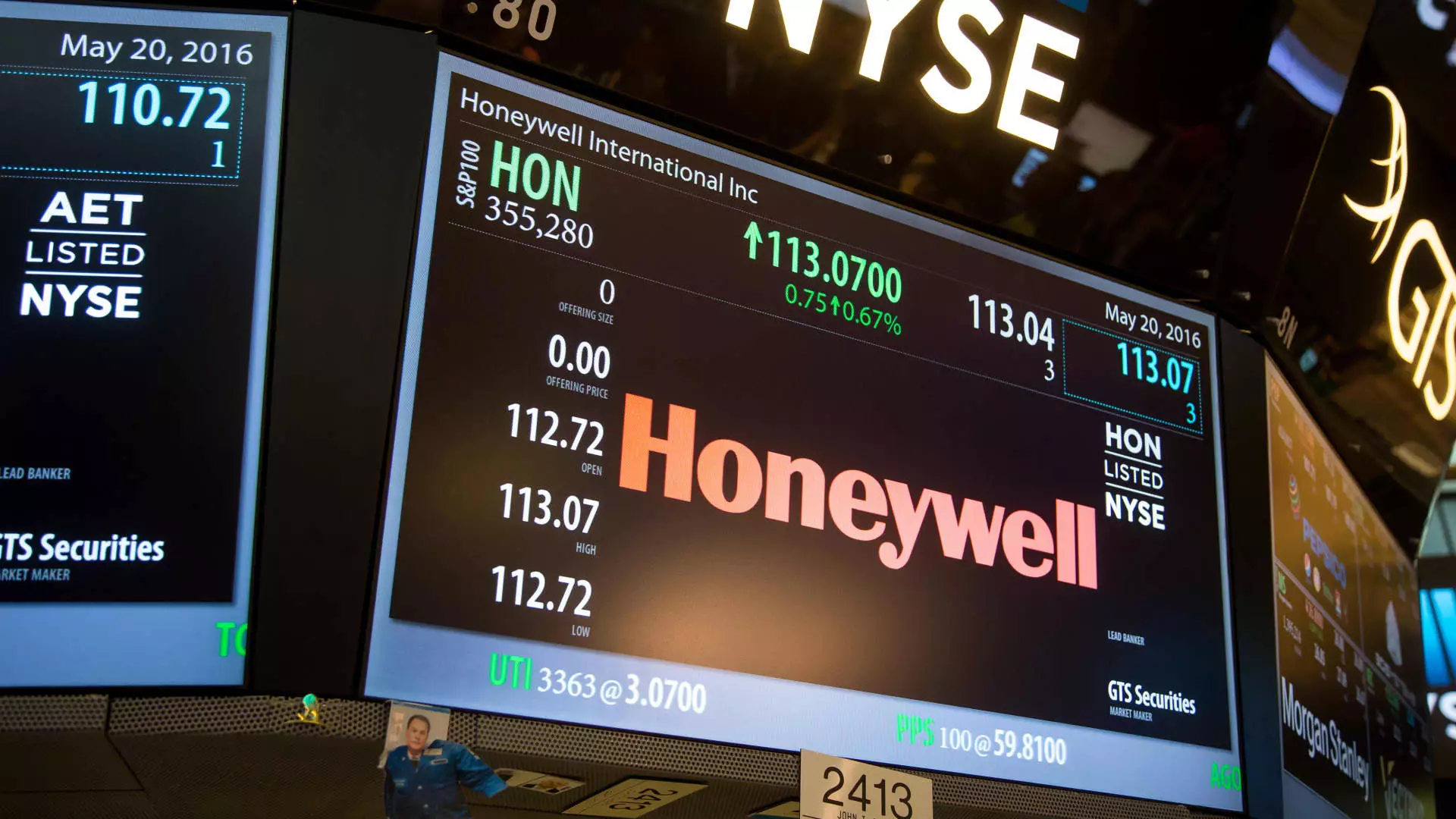Honeywell International Inc., a diversified global industrial player, faced a turbulent market reaction recently following the release of its third-quarter earnings report. With a rise in revenue amid an array of mixed signals, the company’s performance has sparked debates among investors and analysts alike. Revenue for the quarter ending September 30 experienced a year-over-year increase of 5.6%, totaling $9.73 billion. However, this figure fell short of the consensus forecast of $9.9 billion established by LSEG. Alternatively, adjusted earnings per share (EPS) surged by 8.4% to reach $2.58, surpassing both the expected $2.50 and previous management guidance. Despite these positive earnings figures, Honeywell’s stock saw a notable decline of 4.5% in the aftermath of the results.
Honeywell’s earnings call highlighted a critical juxtaposition between promising earnings growth and disappointing sales forecasts. The dip in stock value post-release can be attributed to a lack of confidence in the company’s short-term performance, even as it continues to post strong profitability metrics. In an environment fraught with economic uncertainties and supply chain challenges, investors are weighing both the strength and vulnerabilities evident in Honeywell’s quarterly results. Adjusted earnings might paint a favorable picture; however, the underlying concern stems from the company failing to meet revenue expectations and overall sales disappointments.
This mixed outlook brings to light several strategic aspects that Honeywell is navigating under the leadership of newly appointed CEO Vimal Kapur. His management’s focus on investments in strategic initiatives, particularly through acquisitions, and their efforts to prune the portfolio of non-core businesses signals a transformative period for Honeywell. With productivity-driven strategies at the forefront, the company aims to leverage its strengths, particularly in automation, aerospace, and energy transition sectors.
Despite the recent setbacks, there are indications that Honeywell is positioning itself towards growth in the following years. The company’s strategic acquisitions, which totaled around $9 billion and are expected to add approximately $2 billion to annual sales, reflect a clear intent to strengthen its core operational capabilities. These acquisitions have been articulated as vital components in enhancing Honeywell’s portfolio across automation and aerospace domains.
Furthermore, the management’s decision to spin off non-essential divisions like the advanced materials and personal protective equipment businesses positions Honeywell for a potential organic growth spurt. By concentrating efforts on more strategic areas, the company is likely to bolster its market presence and operational efficiency.
Nevertheless, challenges persist, particularly in Honeywell’s short-cycle businesses, where slow recovery has hindered expected growth trajectories. Conditions within the industrial automation sector reflect broader economic trends that influence order volumes. The recent adjustments to the company’s forecasts, which propose a cautious view of upcoming quarters, highlight the volatile nature of Honeywell’s operational environment.
Management acknowledges that several delays in key project-related businesses and supply chain disruptions have forced a reevaluation of their projections, thereby weighing heavily on optimism for immediate recovery. The details surrounding the short-cycle business‘s slow rebound are critical, as they can significantly affect the overall growth forecast.
While the immediate financial metrics showcased in Honeywell’s third-quarter report suggest a landscape riddled with challenges, the broader narrative is one of potential and repositioning. The compound strategies aimed at increased core focus and proactive management decisions signal the possibility of a resilient comeback as the fiscal year progresses.
For investors, the mixed results underscore the importance of maintaining a balanced view, assessing both the opportunities that arise from transformational initiatives and the realities of short-term hurdles. Anticipating 2025, Honeywell aims to expand its margins across all operational sectors, with enhanced profitability and sustained growth projected. These elements weave a narrative of hope and strategic foresight, providing a reason for cautious optimism amidst current volatility. In the financial arena, understanding the long-term vision often outweighs the immediate noise, and Honeywell is steadfastly preparing for a stronger future.

